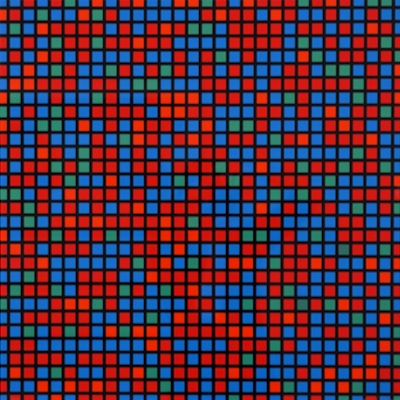
Details
Artist
Styles
// Vilag by Victor Vasarely is a screen-print that exemplifies the artist's mastery in the Op Art movement, where geometry and color interplay to create optical illusions and a sense of three-dimensionality. The print features a dynamic, grid-like pattern with a spherical, bulging form emerging from the center, giving the illusion of depth and movement. The use of vibrant blues, greens, and warm reds contrasts sharply with the structured grid, making the shape appear as if it is pulsating or hovering against the background. Vasarely’s precise manipulation of form and color invites the viewer to engage with the work, experiencing its mesmerizing effect as it shifts with perception. This piece is a striking example of his approach to visual dynamics and spatial illusion.
Vilag
form
Medium
Size
82.2 x 76.2 cm
- Inches
- Centimeters
Edition
Price
- USD
- EUR
- GBP
Details
Artist
Styles
// Vilag by Victor Vasarely is a screen-print that exemplifies the artist's mastery in the Op Art movement, where geometry and color interplay to create optical illusions and a sense of three-dimensionality. The print features a dynamic, grid-like pattern with a spherical, bulging form emerging from the center, giving the illusion of depth and movement. The use of vibrant blues, greens, and warm reds contrasts sharply with the structured grid, making the shape appear as if it is pulsating or hovering against the background. Vasarely’s precise manipulation of form and color invites the viewer to engage with the work, experiencing its mesmerizing effect as it shifts with perception. This piece is a striking example of his approach to visual dynamics and spatial illusion.
- Recently Added
- Price (low-high )
- Price (high-low )
- Year (low-high )
- Year (high-low )
What is geometric abstract art?
Geometric abstraction is a form of abstract art that uses geometric shapes arranged in a non-illusionistic space (though not always) and combined into non-representational (non-objective) compositions. Based on years of artistic research, some artists have proposed that geometric abstraction offers a solution to modern challenges by rejecting traditional illusionistic practices in favor of clarity and simplicity.






































































